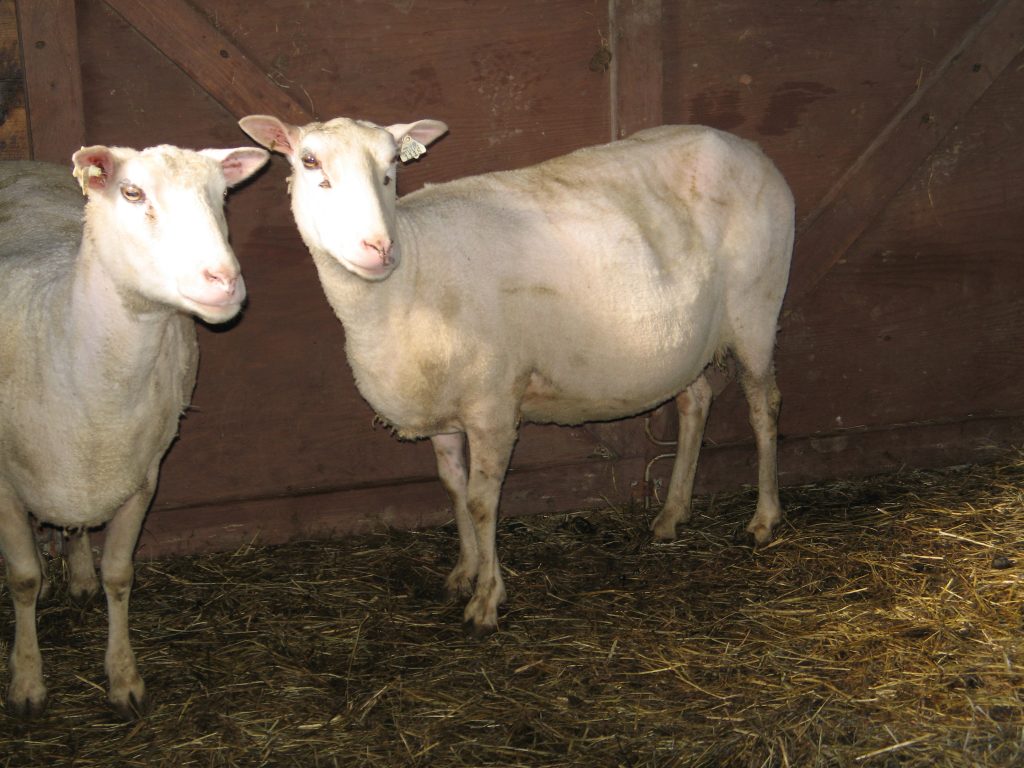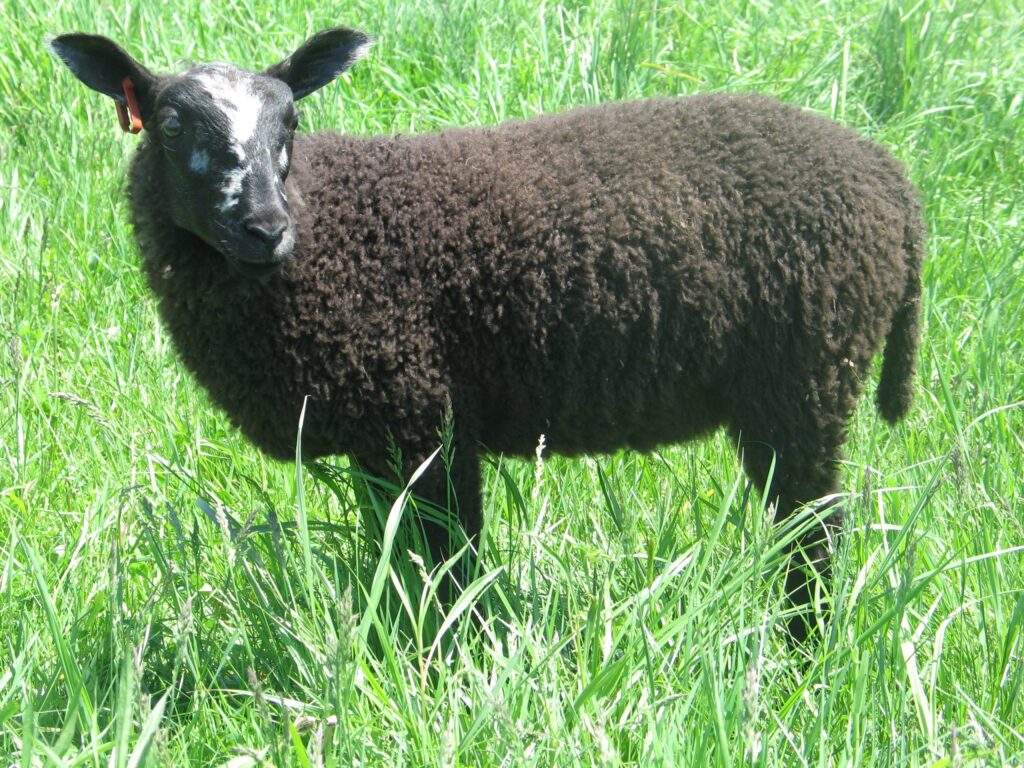Finnsheep
We started out with Finnsheep with the idea that despite their small stature, they would be efficient meat producers since they have multiple lambs each spring. After raising them for a few years now, we have adjusted our expectations somewhat. They are incredible mothers, but have very little muscling when compared with a meat breed, so despite large numbers of lambs, they don’t produce comparatively large amounts of meat. Another issue with the breed is that they come in wide variety; some weigh less than 100lbs, others reach 200lbs; some have long, coarse, wavy wool, others have finely crimped, soft locks; some can barely feed one lamb, others can raise 4; some have terrible structure and struggle to carry their lambs or even to walk, others are strong and solid even with a belly full of 6 lambs! This lack of uniformity makes it very difficult to source a decent flock or sell them as commercially viable stock. Despite all these drawbacks, we still believe there is great potential in Finnsheep, so we are working towards improvement of the breed with a focus on production, structural integrity, and health.
Temperament is an additional selection consideration for us, since we closely manage our sheep year round. If our sheep hurt themselves trying to get away when we come near, that is a problem, since we are near them constantly!
We are culling a number of our ewes this year; keeping the sheep with strong, correct structure who produce multiple lambs and the milk to feed them. We use a three-strike system to decide to stays and who goes. If an animal has a single flaw, we don’t remove them from the flock unless the flaw reduces quality of life. We don’t sell culls as registered animals, nor do we sell culls with health or structural issues – those ones go to our freezer to eliminate any chance of a dishonest buyer breeding an animal with problems. Some animals we cull since they don’t adhere to the Finnsheep breed standard, and those we may sell as unregistered animals, since some of them make great pets!
Some of our favorite ewes are pictured below. We love these ewes because they have solid, balanced structure, good width on the ground(an indication of muscling), fantastic maternal instincts, good milk production, are easier to keep in decent condition, and don’t die of parasites. They each have their flaws, as there is no perfect sheep, but the key is complementary breeding. The ram we pair with these ewes will not carry the same flaws, in order to give their offspring a chance of being an improvement on both parents!



Texels and Crossbreds
The lambs are looking great this year, and the Texel cross experiment has convinced us to expand out Texel program. Originally we intended to use the Texel as a terminal sire, meaning all his lambs get eaten, not kept for breeding. After talking to a couple breeders, one of which came to purchase a different lamb and took a TexelX ram lamb instead, and another who has been breeding Finnsheep, Texels, and their crosses for quite a while, we realized that the TexelX lambs have potential as breeding stock themselves. With the muscularity of the Texel, and the prolificacy of the Finnsheep, they have the potential to produce high numbers of good market lambs, especially when bred to a meat sire. The ram lambs also have the potential to be a good producer of market lambs or production ewes. We are building our Texel/Finn brood ewe flock, as they have exceeded our expectations. Their 3/4 Texel lambs are impressively meaty.




Our experiment with the Bluefaced Leicester/Finnsheep cross as production ewes is continuing, though in a limited fashion, as we have realized the BFL has little to no resiliency, and is mostly redundant to the Finnsheep. Our first BFL/Finn ewe lamb was bred last fall, and performed on par with the second year Finn ewes, with total 90 day weaned lamb weight being 108 lbs while she herself was 100 lbs. We are keeping an additional 3 BFL/Finn ewe lambs from this spring, evaluating their performance, and then deciding whether or not to continue with that cross.




